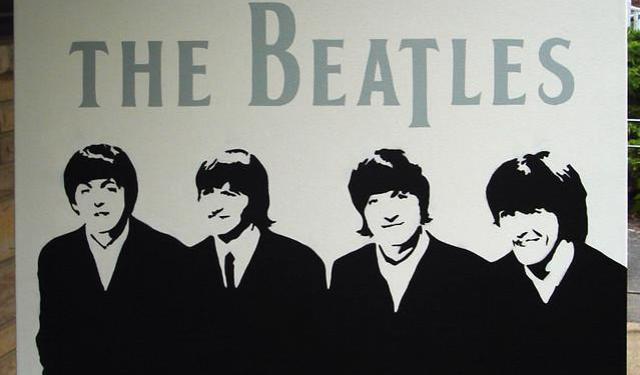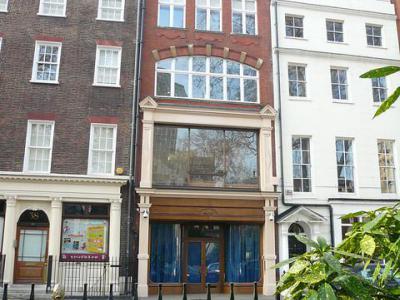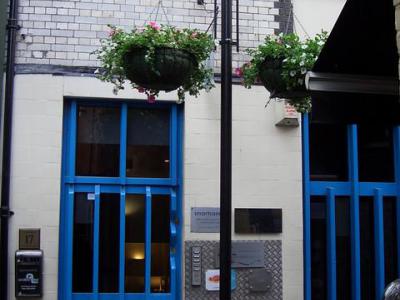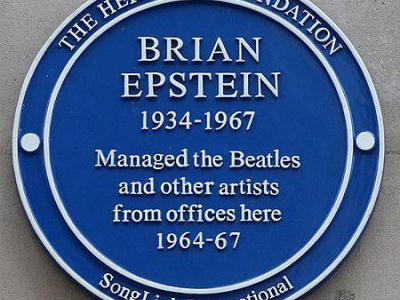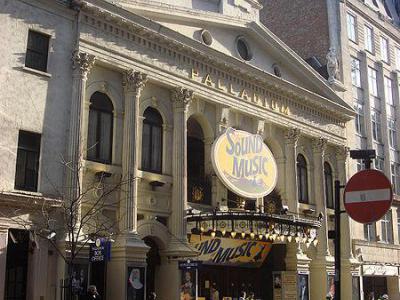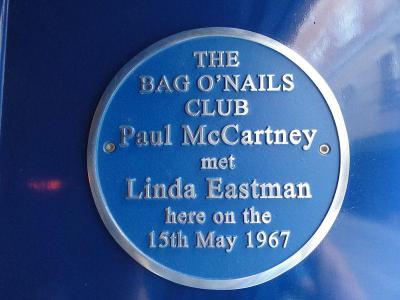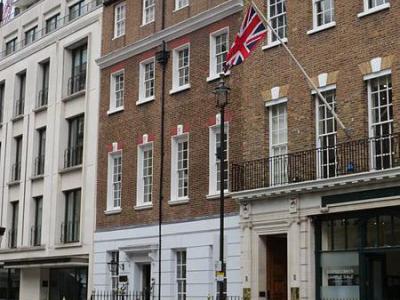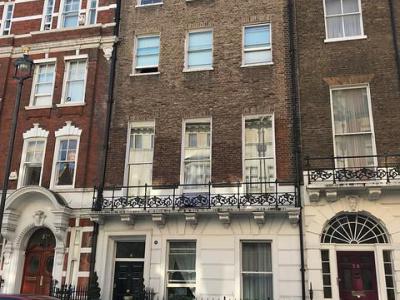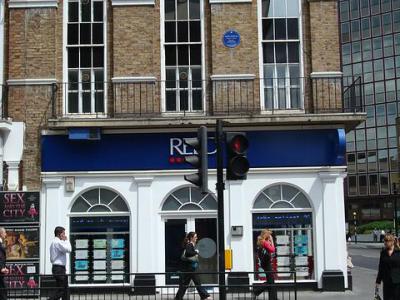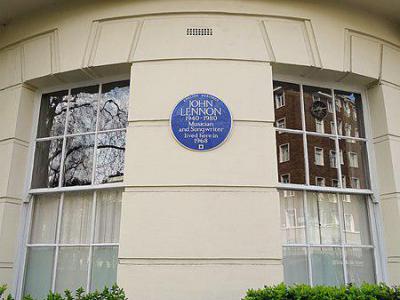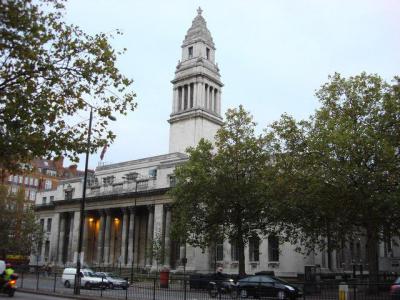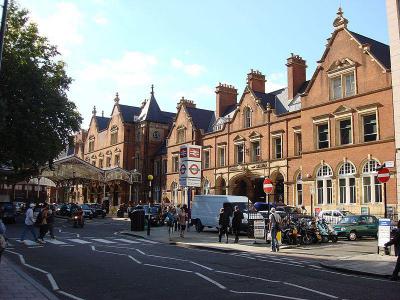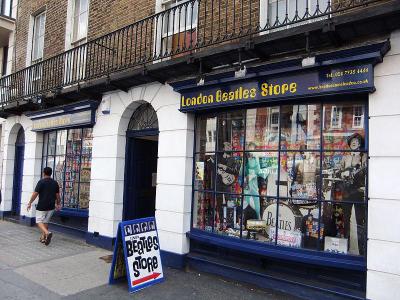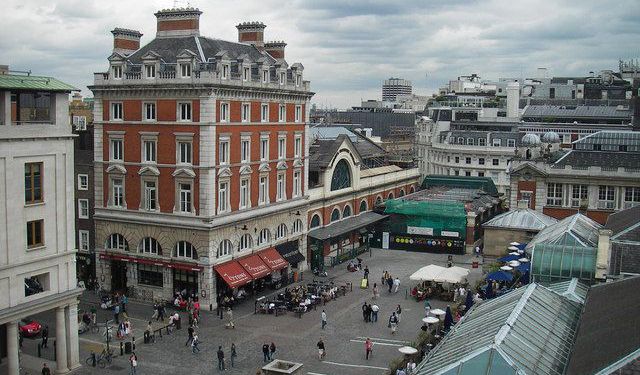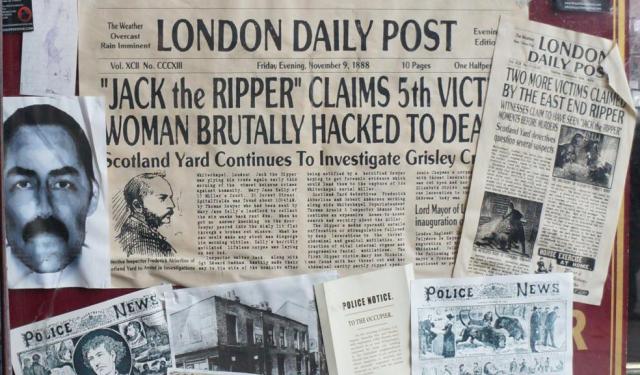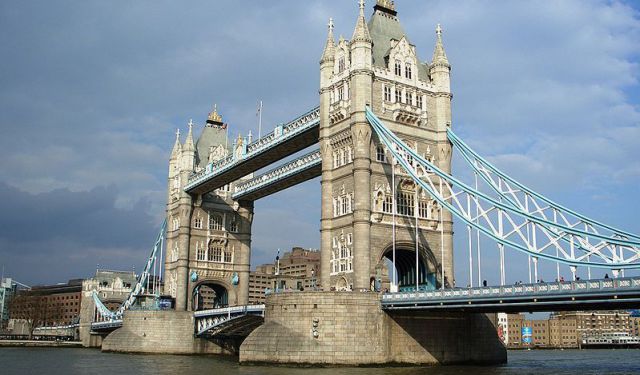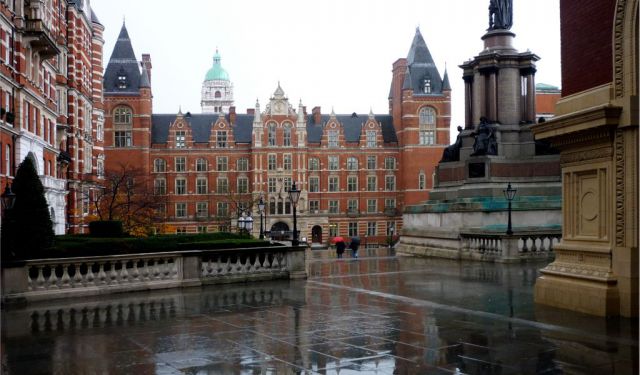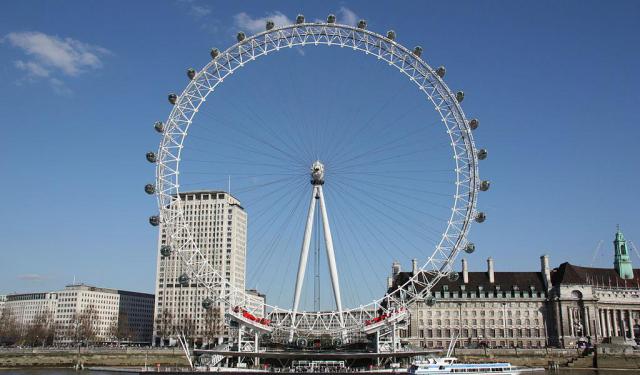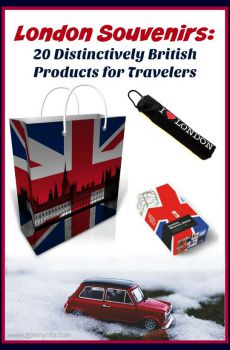Audio Guide: Beatles London Walking Tour (Self Guided), London
The Beatles, often hailed as one of the most influential bands in music history, began their journey in Liverpool in 1960, but it was in London that they truly became global icons. While Liverpool gave them their start, the British capital became their professional playground during the peak of Beatlemania. From recording sessions and business deals to public performances and personal milestones, London shaped much of the Beatles' legacy.
The Fab Four-John Lennon, Paul McCartney, George Harrison, and Ringo Starr-moved to London in the early 1960s as their fame skyrocketed. Here, they recorded most of their groundbreaking albums-Sgt. Pepper, Revolver, The White Album-at Abbey Road Studios, forever tying the band to that now-iconic zebra crossing. The band also used Trident Recording Studios, which boasted more advanced equipment at the time. Their label, Apple Corps, was headquartered at 3 Savile Row, where their final live performance took place on the rooftop in 1969, creating a scene of both chaos and music history.
London also played host to some of the band’s defining cultural moments. The term “Beatlemania” was born after their explosive performance at the London Palladium in 1963. Their business affairs were managed from the NEMS offices, under Brian Epstein’s guidance, while nightlife venues like the Bag O’Nails became regular haunts-Paul even met his future wife, Linda Eastman, there. Beyond their careers, London was the backdrop for personal chapters too: Paul wrote “Yesterday” while staying at 57 Wimpole Street, and he later married Linda at Marylebone Register Office. Meanwhile, 34 Montagu Square saw Lennon, McCartney, and Yoko Ono passing through, and was even the site of a notorious police raid.
Other notable sites include the short-lived Apple Boutique at 94 Baker Street, the film-famous Marylebone Station from A Hard Day’s Night movie, and 1 Soho Square-home of Paul McCartney’s post-Beatles company, MPL Communications. Today, fans can continue their pilgrimage at the London Beatles Store, a nostalgic tribute to the band’s enduring appeal.
Though The Beatles disbanded in 1970, London remains a living museum of their meteoric rise. From the studios to the stage, the love stories to the late-night jams, the city witnessed-and helped shape-the transformation of four lads from Liverpool into worldwide legends.
The Fab Four-John Lennon, Paul McCartney, George Harrison, and Ringo Starr-moved to London in the early 1960s as their fame skyrocketed. Here, they recorded most of their groundbreaking albums-Sgt. Pepper, Revolver, The White Album-at Abbey Road Studios, forever tying the band to that now-iconic zebra crossing. The band also used Trident Recording Studios, which boasted more advanced equipment at the time. Their label, Apple Corps, was headquartered at 3 Savile Row, where their final live performance took place on the rooftop in 1969, creating a scene of both chaos and music history.
London also played host to some of the band’s defining cultural moments. The term “Beatlemania” was born after their explosive performance at the London Palladium in 1963. Their business affairs were managed from the NEMS offices, under Brian Epstein’s guidance, while nightlife venues like the Bag O’Nails became regular haunts-Paul even met his future wife, Linda Eastman, there. Beyond their careers, London was the backdrop for personal chapters too: Paul wrote “Yesterday” while staying at 57 Wimpole Street, and he later married Linda at Marylebone Register Office. Meanwhile, 34 Montagu Square saw Lennon, McCartney, and Yoko Ono passing through, and was even the site of a notorious police raid.
Other notable sites include the short-lived Apple Boutique at 94 Baker Street, the film-famous Marylebone Station from A Hard Day’s Night movie, and 1 Soho Square-home of Paul McCartney’s post-Beatles company, MPL Communications. Today, fans can continue their pilgrimage at the London Beatles Store, a nostalgic tribute to the band’s enduring appeal.
Though The Beatles disbanded in 1970, London remains a living museum of their meteoric rise. From the studios to the stage, the love stories to the late-night jams, the city witnessed-and helped shape-the transformation of four lads from Liverpool into worldwide legends.
How it works: Download the app "GPSmyCity: Walks in 1K+ Cities" from Apple App Store or Google Play Store to your mobile phone or tablet. The app turns your mobile device into a personal tour guide and its built-in GPS navigation functions guide you from one tour stop to next. The app works offline, so no data plan is needed when traveling abroad.
Beatles London Walking Tour Map
Guide Name: Beatles London Walking Tour
Guide Location: England » London (See other walking tours in London)
Guide Type: Self-guided Walking Tour (Sightseeing)
# of Attractions: 12
Tour Duration: 3 Hour(s)
Travel Distance: 4.8 Km or 3 Miles
Author: DanaOffice
Sight(s) Featured in This Guide:
Guide Location: England » London (See other walking tours in London)
Guide Type: Self-guided Walking Tour (Sightseeing)
# of Attractions: 12
Tour Duration: 3 Hour(s)
Travel Distance: 4.8 Km or 3 Miles
Author: DanaOffice
Sight(s) Featured in This Guide:
- MPL Communications – 1 Soho Square
- Trident Recording Studios
- NEMS Offices (Beatles-era site)
- London Palladium
- Bag O'Nails (Beatles-era site)
- 3 Savile Row (site of Beatles' final live performance)
- 57 Wimpole Street (Paul McCartney's former residence)
- 94 Baker Street (former site of Apple boutique)
- 34 Montagu Square (Lennon's & McCartney's former residence)
- Marylebone Register Office
- Marylebone Station
- London Beatles Store
1) MPL Communications – 1 Soho Square
Since the late 1950s, Soho’s been the unofficial clubhouse for London’s rising pop royalty-and nestled right in the heart of it is a little musical empire that just so happens to belong to Sir Paul McCartney. At 1 Soho Square, behind the charming Georgian façade, sits MPL Communications, Paul’s music publishing company since 1970. Yes, the man doesn’t just write hits-he owns them too. In fact, Macca’s the world’s largest independent song publisher, with over 3,000 songs under his belt, including the Buddy Holly catalog and more Broadway gold than a Tony Awards afterparty.
Now, Sir Paul’s not crunching numbers himself-he’s got accountants for that. But he still keeps an eye on the creative side, because why just rest on your Beatles laurels when you can run a mini-musical kingdom?
Oh, and here’s a fun twist-beneath this historic building lies a secret weapon: a fully decked-out recording studio, a faithful replica of EMI’s legendary Studio No. 2. No public access, of course-but if you happen to be loitering respectfully nearby, you just might catch a glimpse of Macca coming or going. He’s famously unpredictable: one day a ghost, the next, he's waving at tourists like it’s Abbey Road all over again.
And if you’re strolling by after dark and the curtains are drawn just right, look up-you’ll see his office glowing with the reflected shimmer of wall-to-wall gold and platinum records. It’s not a museum, but it’s the closest thing to one this side of Penny Lane.
Now, Sir Paul’s not crunching numbers himself-he’s got accountants for that. But he still keeps an eye on the creative side, because why just rest on your Beatles laurels when you can run a mini-musical kingdom?
Oh, and here’s a fun twist-beneath this historic building lies a secret weapon: a fully decked-out recording studio, a faithful replica of EMI’s legendary Studio No. 2. No public access, of course-but if you happen to be loitering respectfully nearby, you just might catch a glimpse of Macca coming or going. He’s famously unpredictable: one day a ghost, the next, he's waving at tourists like it’s Abbey Road all over again.
And if you’re strolling by after dark and the curtains are drawn just right, look up-you’ll see his office glowing with the reflected shimmer of wall-to-wall gold and platinum records. It’s not a museum, but it’s the closest thing to one this side of Penny Lane.
2) Trident Recording Studios
If Abbey Road was the buttoned-up schoolmaster of recording studios, Trident Studios was the cool art teacher who let you play electric guitar during lunch.
Founded in 1967 by brothers Barry and Norman Sheffield, Trident offered a laid-back vibe that was a breath of fresh air compared to the lab-coated formality of EMI Studios. While Abbey Road’s engineers were busy running stress tests on cables and sipping tea, Trident was already rolling tape-with shiny new tech, no less. It was the first UK studio to embrace Dolby and rock an 8-track recorder, which was a big deal when most studios were still living in 4-track mono-land.
The Beatles, never ones to wait for a lab report, jumped ship from Abbey Road in 1968 to record Hey Jude at Trident. The logic? Why wait for months of equipment trials when Trident let you hit “record” the second something was plugged in? The gamble paid off-Hey Jude became one of their most iconic tracks. Soon after, each Beatle returned to Trident solo, clearly fans of the no-fuss freedom.
Thanks to their stamp of approval, Trident quickly became the place to be for the rock ‘n’ roll elite. It helped launch the careers of artists like David Bowie, Queen (yes, Bohemian Rhapsody was born here), and Elton John. And the guest list didn’t stop there-Lou Reed, Carly Simon, Genesis, Supertramp, and even Black Sabbath all swung by to make magic behind the mic.
Today, the studio lives on as Trident Audio Post, still making soundwaves-albeit with fewer bell-bottoms and more post-production finesse.
Founded in 1967 by brothers Barry and Norman Sheffield, Trident offered a laid-back vibe that was a breath of fresh air compared to the lab-coated formality of EMI Studios. While Abbey Road’s engineers were busy running stress tests on cables and sipping tea, Trident was already rolling tape-with shiny new tech, no less. It was the first UK studio to embrace Dolby and rock an 8-track recorder, which was a big deal when most studios were still living in 4-track mono-land.
The Beatles, never ones to wait for a lab report, jumped ship from Abbey Road in 1968 to record Hey Jude at Trident. The logic? Why wait for months of equipment trials when Trident let you hit “record” the second something was plugged in? The gamble paid off-Hey Jude became one of their most iconic tracks. Soon after, each Beatle returned to Trident solo, clearly fans of the no-fuss freedom.
Thanks to their stamp of approval, Trident quickly became the place to be for the rock ‘n’ roll elite. It helped launch the careers of artists like David Bowie, Queen (yes, Bohemian Rhapsody was born here), and Elton John. And the guest list didn’t stop there-Lou Reed, Carly Simon, Genesis, Supertramp, and even Black Sabbath all swung by to make magic behind the mic.
Today, the studio lives on as Trident Audio Post, still making soundwaves-albeit with fewer bell-bottoms and more post-production finesse.
3) NEMS Offices (Beatles-era site)
NEMS, short for North End Music Stores, is more famously known as the empire run by Brian Epstein, often dubbed the “Fifth Beatle” (minus the haircut and the screaming fans). Back in Liverpool, the Epstein family’s NEMS shop was the go-to music store, and it became ground zero for Beatlemania before Beatlemania even had a name. Legend has it that the store kept getting flooded with requests for a little-known record called My Bonnie, credited to some band backing a guy named Tony Sheridan. That backing band was The Beatles. The record flew off the shelves every time it was restocked-and that’s when Brian’s managerial spidey sense started tingling.
Once Epstein officially signed on as the band’s manager, he handled the business end of Beatlemania from his NEMS offices in London-at first tucked away in a nondescript building, and later upgraded to a prime address right next to the London Palladium in 1964. Because if your band is rocketing to global stardom, your office location needs to keep up. Epstein worked there until his untimely death in 1967, quietly pulling the strings behind the scenes while the Fab Four lit up the stage.
That office also hosted plenty of press interviews-and one particularly infamous moment. It was there that John Lennon casually dropped his “we’re more popular than Jesus” comment. In Britain, it passed with barely a shrug. But once the quote crossed the Atlantic, all musical hell broke loose. Christian communities in the U.S. did not take kindly to the idea of mop-topped prophets outshining the Messiah. Cue the bonfires of Beatles records. Epstein scrambled for damage control, organizing press conferences galore, while Lennon walked it back, saying he wasn’t comparing himself to Christ-just pointing out that, well, times were changing.
And that is how a family-owned record store became the command center of the most iconic band in music history.
Once Epstein officially signed on as the band’s manager, he handled the business end of Beatlemania from his NEMS offices in London-at first tucked away in a nondescript building, and later upgraded to a prime address right next to the London Palladium in 1964. Because if your band is rocketing to global stardom, your office location needs to keep up. Epstein worked there until his untimely death in 1967, quietly pulling the strings behind the scenes while the Fab Four lit up the stage.
That office also hosted plenty of press interviews-and one particularly infamous moment. It was there that John Lennon casually dropped his “we’re more popular than Jesus” comment. In Britain, it passed with barely a shrug. But once the quote crossed the Atlantic, all musical hell broke loose. Christian communities in the U.S. did not take kindly to the idea of mop-topped prophets outshining the Messiah. Cue the bonfires of Beatles records. Epstein scrambled for damage control, organizing press conferences galore, while Lennon walked it back, saying he wasn’t comparing himself to Christ-just pointing out that, well, times were changing.
And that is how a family-owned record store became the command center of the most iconic band in music history.
4) London Palladium
Let’s rewind to October 13, 1963-The Beatles step onto the stage of Sunday Night at The London Palladium, the UK’s top variety show at the time. Now, this wasn’t just any stage. This was the London Palladium-glitzy, glamorous, and soaked in showbiz sparkle. The Fab Four belted out hits like "From Me to You," "I'll Get You," "She Loves You," and "Twist and Shout" to a “modest little” TV audience of... just 15 million people. No pressure, lads...
And that was it-the switch had been flipped. The morning after, newspapers practically combusted with stories of hysterical fans, stampeding crowds, and eardrum-threatening screams. One clever journalist even coined the term “Beatlemania,” which, to be clear, was not just fangirling-it was full-blown cultural combustion. We're talking teenagers flinging themselves past police barricades, fainting in droves, and theatre janitors praying for a day off thanks to fans literally losing control of their... everything. Yes, Beatlemania was that intense.
After that night at the Palladium, The Beatles’ press officer stopped chasing headlines-they started chasing him. By 1964, the band wasn’t just in the charts; they were everywhere: on your radio, in your newspapers, on your TV, and probably haunting your dreams, too. For a while, it seemed like the world didn’t turn without a Beatle giving it a spin.
Of course, all manias have a shelf life. By late 1965, the hysteria began to cool, and by 1970, it had gently faded into pop legend. But for that glorious stretch of time, Beatlemania wasn’t just a craze-it was a global takeover in matching suits and mop-tops.
And that was it-the switch had been flipped. The morning after, newspapers practically combusted with stories of hysterical fans, stampeding crowds, and eardrum-threatening screams. One clever journalist even coined the term “Beatlemania,” which, to be clear, was not just fangirling-it was full-blown cultural combustion. We're talking teenagers flinging themselves past police barricades, fainting in droves, and theatre janitors praying for a day off thanks to fans literally losing control of their... everything. Yes, Beatlemania was that intense.
After that night at the Palladium, The Beatles’ press officer stopped chasing headlines-they started chasing him. By 1964, the band wasn’t just in the charts; they were everywhere: on your radio, in your newspapers, on your TV, and probably haunting your dreams, too. For a while, it seemed like the world didn’t turn without a Beatle giving it a spin.
Of course, all manias have a shelf life. By late 1965, the hysteria began to cool, and by 1970, it had gently faded into pop legend. But for that glorious stretch of time, Beatlemania wasn’t just a craze-it was a global takeover in matching suits and mop-tops.
5) Bag O'Nails (Beatles-era site)
Picture this: Swinging Sixties London, where the air was thick with hairspray, rebellion, and guitar riffs. Sure, the Scotch of St. James and Ad Lib were the darlings of the rock ‘n’ roll elite-but creeping up from the shadows came a little joint called the Bag O’Nails, turning heads and stealing hearts by the late 1960s.
Tucked at 9 Kingly Street, just a hop, skip, and barely a guitar solo from Regent Street, this unassuming basement club didn’t exactly scream “rock royalty”-but it delivered. Jimi Hendrix played his second-ever London gig here, just casually setting the fretboard on fire. And The Beatles? Yeah, they were regulars. Paul McCartney was such a fan he practically had a designated seat-and it was right there on May 15, 1967, that he met Linda Eastman, future Mrs. Macca, while watching Georgie Fame and the Blue Flames burn up the stage.
Their fateful meeting is now immortalized with a commemorative plaque-because, of course, even rock gods deserve a rom-com moment. As for the Bag O’Nails itself, the amps went quiet in October 2018 when it closed its doors. But fear not-it’s rumored to be reborn as a sleek new members’ club called The Court. Whether it’ll have the same mojo? Well... let’s just say the spirit of 1967 is a tough act to follow.
Tucked at 9 Kingly Street, just a hop, skip, and barely a guitar solo from Regent Street, this unassuming basement club didn’t exactly scream “rock royalty”-but it delivered. Jimi Hendrix played his second-ever London gig here, just casually setting the fretboard on fire. And The Beatles? Yeah, they were regulars. Paul McCartney was such a fan he practically had a designated seat-and it was right there on May 15, 1967, that he met Linda Eastman, future Mrs. Macca, while watching Georgie Fame and the Blue Flames burn up the stage.
Their fateful meeting is now immortalized with a commemorative plaque-because, of course, even rock gods deserve a rom-com moment. As for the Bag O’Nails itself, the amps went quiet in October 2018 when it closed its doors. But fear not-it’s rumored to be reborn as a sleek new members’ club called The Court. Whether it’ll have the same mojo? Well... let’s just say the spirit of 1967 is a tough act to follow.
6) 3 Savile Row (site of Beatles' final live performance)
3 Savile Row-once the buzzing nerve center of Apple Records, and now a backdrop for selfie-seekers outside a clothing store. Back on January 30, 1969, this unassuming rooftop became the stage for one of the most legendary mic drops in music history: The Beatles’ final live performance.
It was lunchtime. London’s suits were munching their sandwiches when-boom-four scruffy icons, plus Billy Preston on keys, started blasting through a 42-minute, 5-song set that would later land on the Let It Be album. The band was in full groove mode while the winds whipped their hair, and baffled office workers peered out windows like confused meerkats. And yes, the basement glimpsed in the Let It Be film was right below all that magic.
Of course, no good rock 'n' roll moment goes uninterrupted. Enter the local police-stationed just a few doors down, no less-who showed up after noise complaints from thoroughly unimpressed nearby office dwellers. The show was cut short, but not before John Lennon gave the world one last wink with his legendary send-off: “I hope we passed the audition.” Classic Lennon.
Today, there’s no concert, no amps, no rooftop jam. Just a discreet plaque halfway up the building and an uncanny feeling that the ghost of Beatlemania is still lingering in the bricks. The police station’s still there, too-just in case someone else gets the idea to plug in a Marshall stack and go full rooftop rebel.
It was lunchtime. London’s suits were munching their sandwiches when-boom-four scruffy icons, plus Billy Preston on keys, started blasting through a 42-minute, 5-song set that would later land on the Let It Be album. The band was in full groove mode while the winds whipped their hair, and baffled office workers peered out windows like confused meerkats. And yes, the basement glimpsed in the Let It Be film was right below all that magic.
Of course, no good rock 'n' roll moment goes uninterrupted. Enter the local police-stationed just a few doors down, no less-who showed up after noise complaints from thoroughly unimpressed nearby office dwellers. The show was cut short, but not before John Lennon gave the world one last wink with his legendary send-off: “I hope we passed the audition.” Classic Lennon.
Today, there’s no concert, no amps, no rooftop jam. Just a discreet plaque halfway up the building and an uncanny feeling that the ghost of Beatlemania is still lingering in the bricks. The police station’s still there, too-just in case someone else gets the idea to plug in a Marshall stack and go full rooftop rebel.
7) 57 Wimpole Street (Paul McCartney's former residence)
It’s the swinging London of 1963: Beatlemania is turning up to 11, and Paul McCartney moves into a posh townhouse at 57 Wimpole Street, courtesy of his girlfriend Jane Asher’s well-to-do family. Not a bad gig for a 21-year-old rock star. He was set up in the top-back room-a cozy, near-apartment setup with all the essentials: bed, chair, record player, and yes, a piano for those 3 a.m. strokes of genius.
And genius did strike. While dating the then-18-year-old Jane, Paul turned that upper room-and the family’s music room downstairs-into a creative goldmine. In fact, the melody for “Yesterday” reportedly came to him in a dream. He stumbled out of bed, hit the piano, and boom-legend was born. That song would go on to be the most covered track in recording history. Meanwhile, “I Want to Hold Your Hand”, their first U.S. number one, was born in the basement, where Mrs. Asher’s music room proved a pretty solid recording lab (with no screaming fans to interrupt).
But like all classic love ballads, this one hit a sour note. In 1968, Jane returned from an American tour to find Paul rehearsing a different kind of duet-with another woman. The engagement ended, the headlines wrote themselves, and Paul soon moved on with photographer Linda Eastman, who would become his wife and partner through decades of music, love, and... animal rights campaigns.
And just a year after this romantic remix, The Beatles called it quits. Coincidence? Well, we’ll let you decide.
And genius did strike. While dating the then-18-year-old Jane, Paul turned that upper room-and the family’s music room downstairs-into a creative goldmine. In fact, the melody for “Yesterday” reportedly came to him in a dream. He stumbled out of bed, hit the piano, and boom-legend was born. That song would go on to be the most covered track in recording history. Meanwhile, “I Want to Hold Your Hand”, their first U.S. number one, was born in the basement, where Mrs. Asher’s music room proved a pretty solid recording lab (with no screaming fans to interrupt).
But like all classic love ballads, this one hit a sour note. In 1968, Jane returned from an American tour to find Paul rehearsing a different kind of duet-with another woman. The engagement ended, the headlines wrote themselves, and Paul soon moved on with photographer Linda Eastman, who would become his wife and partner through decades of music, love, and... animal rights campaigns.
And just a year after this romantic remix, The Beatles called it quits. Coincidence? Well, we’ll let you decide.
8) 94 Baker Street (former site of Apple boutique)
Now, this was the Beatles’ first bold leap into the world of retail therapy-Apple-style. As Paul McCartney so dreamily put it, the idea was to create “a beautiful place where beautiful people can buy beautiful things.” What could possibly go wrong?
Well, for starters: everything. Back in September 1967, the Fab Four handed a cool £100,000 to a psychedelic Dutch design collective known as The Fool-which in hindsight feels... a little on the nose. Their mission was to design and stock the new Apple Boutique. Naturally, the team responded with a massive technicolor mural plastered across the building's façade-rainbows, swirls, pure hippie euphoria. Local shopkeepers, however, were less than groovy about it. Cue complaints, and soon the mural was whitewashed into oblivion-though some say it still lurks beneath the paint like a ghost of fashion’s past.
The boutique opened in December 1967 with a star-studded bash. John and George showed up, wives in tow, joined by the likes of Eric Clapton, Cilla Black, and Kenneth Tynan. The drinks menu was strictly apple juice, because... no booze license. Which somehow made it feel even more surreal.
Inside, the racks were packed with psychedelic garments and trippy accessories, all aimed at London’s fashion-forward youth. Unfortunately, the boutique had one major design flaw: absolutely no one was paying. Shoplifting ran rampant-by both customers and staff. Yes, even the helpers helped themselves.
Just eight months later, the Beatles were done playing shop. Tired of the chaos, they shut it all down-but not without a final flourish. On July 30, 1968, they opened the doors one last time and let the public raid the place for free. That’s right: one of the most exclusive boutiques in London ended its run with a clearance sale where everything was 100% off.
In the end, the Apple Boutique became less “beautiful dream” and more “free-for-all fashion meltdown.” But hey-it was the ‘60s.
Well, for starters: everything. Back in September 1967, the Fab Four handed a cool £100,000 to a psychedelic Dutch design collective known as The Fool-which in hindsight feels... a little on the nose. Their mission was to design and stock the new Apple Boutique. Naturally, the team responded with a massive technicolor mural plastered across the building's façade-rainbows, swirls, pure hippie euphoria. Local shopkeepers, however, were less than groovy about it. Cue complaints, and soon the mural was whitewashed into oblivion-though some say it still lurks beneath the paint like a ghost of fashion’s past.
The boutique opened in December 1967 with a star-studded bash. John and George showed up, wives in tow, joined by the likes of Eric Clapton, Cilla Black, and Kenneth Tynan. The drinks menu was strictly apple juice, because... no booze license. Which somehow made it feel even more surreal.
Inside, the racks were packed with psychedelic garments and trippy accessories, all aimed at London’s fashion-forward youth. Unfortunately, the boutique had one major design flaw: absolutely no one was paying. Shoplifting ran rampant-by both customers and staff. Yes, even the helpers helped themselves.
Just eight months later, the Beatles were done playing shop. Tired of the chaos, they shut it all down-but not without a final flourish. On July 30, 1968, they opened the doors one last time and let the public raid the place for free. That’s right: one of the most exclusive boutiques in London ended its run with a clearance sale where everything was 100% off.
In the end, the Apple Boutique became less “beautiful dream” and more “free-for-all fashion meltdown.” But hey-it was the ‘60s.
9) 34 Montagu Square (Lennon's & McCartney's former residence)
At 34 Montagu Square, Beatles fans can strike a pose beside the Blue Plaque honoring John Lennon-and maybe whisper a thank-you to Ringo Starr, who bought the place in 1965. Ever the generous landlord, Ringo rented it out to Paul McCartney, Jimi Hendrix, and eventually John Lennon and Yoko Ono. Yes, this cozy little flat saw more rock royalty than the average festival lineup.
In 1968, Lennon and Ono moved into the basement and ground floor, where they did what any iconic couple might do: posed nude for the Two Virgins album cover. Artistic? Provocative? Cold, probably. But things got even more interesting on the morning of October 18, 1968, when the infamous Drugs Squad came knocking. Leading the charge was Detective Sergeant Norman Pilcher, the go-to party pooper for rock stars-he’d already raided Mick Jagger, Brian Jones, and Eric Clapton. So naturally, Lennon was next on his checklist.
Ironically, Lennon had been warned about Pilcher’s plans and had the flat scrubbed cleaner than a hospital corridor. So you can imagine his confusion when officers claimed sniffer dogs uncovered cannabis resin stashed in a film canister, a binocular case, and-wait for it-a cigarette roller. Total score? About half an ounce. Not exactly Scarface, but enough for an arrest.
John and Yoko were led out through a wall of flashing cameras and whisked off to Paddington Green police station, where Lennon phoned a friend-specifically, EMI chairman Sir Joseph Lockwood-for some career-saving advice. Spoiler: It was a long way from “Help!”, but a strategy was formed.
So yes, 34 Montagu Square isn’t just a pretty address-it’s where music, art, scandal, and law enforcement collided in true 1960s fashion.
In 1968, Lennon and Ono moved into the basement and ground floor, where they did what any iconic couple might do: posed nude for the Two Virgins album cover. Artistic? Provocative? Cold, probably. But things got even more interesting on the morning of October 18, 1968, when the infamous Drugs Squad came knocking. Leading the charge was Detective Sergeant Norman Pilcher, the go-to party pooper for rock stars-he’d already raided Mick Jagger, Brian Jones, and Eric Clapton. So naturally, Lennon was next on his checklist.
Ironically, Lennon had been warned about Pilcher’s plans and had the flat scrubbed cleaner than a hospital corridor. So you can imagine his confusion when officers claimed sniffer dogs uncovered cannabis resin stashed in a film canister, a binocular case, and-wait for it-a cigarette roller. Total score? About half an ounce. Not exactly Scarface, but enough for an arrest.
John and Yoko were led out through a wall of flashing cameras and whisked off to Paddington Green police station, where Lennon phoned a friend-specifically, EMI chairman Sir Joseph Lockwood-for some career-saving advice. Spoiler: It was a long way from “Help!”, but a strategy was formed.
So yes, 34 Montagu Square isn’t just a pretty address-it’s where music, art, scandal, and law enforcement collided in true 1960s fashion.
10) Marylebone Register Office
Ah, the Old Marylebone Register Office-London’s unofficial chapel of rock 'n' roll romance and paparazzi chaos. Imagine: it’s March 12, 1969, and Paul McCartney, dreamy heartthrob of a generation, ties the knot with photographer Linda Eastman. Cue mass hysteria. Dozens of weeping fans sobbing outside, mourning the end of their imaginary engagements with Sir Paul. Romantic, right?
Despite hoping for a modest "I do," the ceremony quickly spiraled into a full-blown media circus. Fun fact: not one of the other Beatles showed up. But no hard feelings-Paul clearly liked the venue enough to return for a third round in 2011, when he married Nancy Shevell in a slightly less tear-streaked affair. Ringo Starr also got hitched here in the 1980s, proving that if you’re a Beatle looking to make it official, Marylebone is the place to do it.
With its grand façade and central location, the Old Marylebone Register Office has become a magnet for the starry-eyed and star-studded alike. After a modest £60 million makeover (just a nip and tuck, really), it reopened in 2017, ready to resume its duties: weddings, civil partnerships, baby-naming ceremonies-and the occasional tabloid meltdown.
Despite hoping for a modest "I do," the ceremony quickly spiraled into a full-blown media circus. Fun fact: not one of the other Beatles showed up. But no hard feelings-Paul clearly liked the venue enough to return for a third round in 2011, when he married Nancy Shevell in a slightly less tear-streaked affair. Ringo Starr also got hitched here in the 1980s, proving that if you’re a Beatle looking to make it official, Marylebone is the place to do it.
With its grand façade and central location, the Old Marylebone Register Office has become a magnet for the starry-eyed and star-studded alike. After a modest £60 million makeover (just a nip and tuck, really), it reopened in 2017, ready to resume its duties: weddings, civil partnerships, baby-naming ceremonies-and the occasional tabloid meltdown.
11) Marylebone Station
If you're itching to retrace the actual footsteps of John, George, and Ringo-minus the fan stampede-make your way to Boston Place, just alongside Marylebone Station. This modest stretch of pavement played a starring role in the opening scenes of A Hard Day’s Night, where the lads leg it through the street under that now-famous iron-and-glass canopy, fleeing fans and probably a few unpaid lunch bills.
Back in 1964, Sundays meant no trains, no crowds, and-lucky for the crew-no disruptions. So what did they do? They filled the station with a horde of over a hundred high-pitched, high-energy extras, aka actual Beatles fans, who needed zero direction when it came to chasing after the Fab Three. On one Sunday, the chaos. On the next? Just the boys and a camera crew, having the run of the place.
And here’s a sweet twist: amid all the shrieking and running and faux train-catching, George Harrison first met Patti Boyd, a young extra with no idea she was auditioning for the role of future Beatle bride. Sparks flew, hearts raced, and eventually, they tied the knot. She went from “background blur” to “Beatlemania insider” in record time.
So next time you're at Marylebone, pause under that old canopy, take a deep breath-and try not to break into a jog. You’re walking through rock 'n' roll history… just don’t expect anyone to chase you.
Back in 1964, Sundays meant no trains, no crowds, and-lucky for the crew-no disruptions. So what did they do? They filled the station with a horde of over a hundred high-pitched, high-energy extras, aka actual Beatles fans, who needed zero direction when it came to chasing after the Fab Three. On one Sunday, the chaos. On the next? Just the boys and a camera crew, having the run of the place.
And here’s a sweet twist: amid all the shrieking and running and faux train-catching, George Harrison first met Patti Boyd, a young extra with no idea she was auditioning for the role of future Beatle bride. Sparks flew, hearts raced, and eventually, they tied the knot. She went from “background blur” to “Beatlemania insider” in record time.
So next time you're at Marylebone, pause under that old canopy, take a deep breath-and try not to break into a jog. You’re walking through rock 'n' roll history… just don’t expect anyone to chase you.
12) London Beatles Store
Right next door to the Sherlock Holmes Museum-because why not mash up two British legends in one afternoon-you’ll find the London Beatles Store, a must-stop for any fan of the Fab Four. Step inside and you’re greeted with a surprisingly roomy interior-two whole rooms overflowing with Beatles merch that makes the Abbey Road gift shop look like a sad corner shelf at a petrol station.
We're talking posters, shirts, mugs, games, enamel pins, and enough books to build your own Yellow Submarine library. Yes, some of the prices might make your wallet do a double-take-but fear not, eagle-eyed shoppers! There are occasional deals that might just make you twist and shout.
And sure, they have a website for online orders, but the real magic happens in-store. The staff are walking Beatles encyclopedias, always ready with a tip, a fact, or a little help from their friends. For diehard fans, casual shoppers, or anyone who’s ever hummed Hey Jude in the shower, this place hits all the right notes.
We're talking posters, shirts, mugs, games, enamel pins, and enough books to build your own Yellow Submarine library. Yes, some of the prices might make your wallet do a double-take-but fear not, eagle-eyed shoppers! There are occasional deals that might just make you twist and shout.
And sure, they have a website for online orders, but the real magic happens in-store. The staff are walking Beatles encyclopedias, always ready with a tip, a fact, or a little help from their friends. For diehard fans, casual shoppers, or anyone who’s ever hummed Hey Jude in the shower, this place hits all the right notes.
Walking Tours in London, England
Create Your Own Walk in London
Creating your own self-guided walk in London is easy and fun. Choose the city attractions that you want to see and a walk route map will be created just for you. You can even set your hotel as the start point of the walk.
Covent Garden Walking Tour
A shopping and entertainment hub on the eastern fringes of London's West End, Covent Garden is a district historically associated with the former fruit-and-vegetable market – currently a shopping spot popular with locals and tourists alike.
Once a slum area, today the north of the district is given over to independent shops centered on Neal's Yard and Seven Dials. Both places offer... view more
Tour Duration: 2 Hour(s)
Travel Distance: 3.0 Km or 1.9 Miles
Once a slum area, today the north of the district is given over to independent shops centered on Neal's Yard and Seven Dials. Both places offer... view more
Tour Duration: 2 Hour(s)
Travel Distance: 3.0 Km or 1.9 Miles
Jack the Ripper Walking Tour
Jack the Ripper, an unidentified serial killer who terrorized the British capital in 1888, became notorious for the series of brutal and gruesome murders that he carried out in the East End of London. The primary setting for the Jack the Ripper attacks was Whitechapel, at the time a poverty-stricken and crime-ridden district, known for its dark alleys and narrow streets.
The name "Jack the... view more
Tour Duration: 2 Hour(s)
Travel Distance: 4.0 Km or 2.5 Miles
The name "Jack the... view more
Tour Duration: 2 Hour(s)
Travel Distance: 4.0 Km or 2.5 Miles
City of London Walking Tour
The City of London, often referred to simply as the City (with the capital C), is the historic and financial core of the British capital. Despite being just over one square mile in area (for which reason it is also lovingly dubbed the Square Mile), it holds immense importance as the original site of Londinium, the Roman settlement founded circa 43 AD. Over the centuries, this small patch of land... view more
Tour Duration: 3 Hour(s)
Travel Distance: 4.6 Km or 2.9 Miles
Tour Duration: 3 Hour(s)
Travel Distance: 4.6 Km or 2.9 Miles
Kensington/Knightsbridge Walking Tour
Situated just below Hyde Park, Knightsbridge and South Kensington are two adjacent neighborhoods with grand Victorian homes and leafy garden squares. Home to London’s most expensive homes, Knightsbridge has some of the highest density of millionaires in the world. This is clearly reflected in the selection of stores & restaurants in the area, including the famous Harvey Nichols and Harrods... view more
Tour Duration: 2 Hour(s)
Travel Distance: 4.5 Km or 2.8 Miles
Tour Duration: 2 Hour(s)
Travel Distance: 4.5 Km or 2.8 Miles
South Bank Walking Tour
London’s South Bank, stretching along the southern side of the River Thames, roughly between Westminster Bridge and Tower Bridge, is one of the most interesting and liveliest parts of the British capital. Here, London’s old soul and modern edge shake hands... and then probably go grab a pint together. Famous for its arts, culture, food, and scenic riverside walks, the area has a long and... view more
Tour Duration: 3 Hour(s)
Travel Distance: 4.8 Km or 3 Miles
Tour Duration: 3 Hour(s)
Travel Distance: 4.8 Km or 3 Miles
Shakespeare's London Walking Tour
You might know him as “the Bard,” but to England, William Shakespeare is practically the patron saint of poetic plot twists. Born in 1564 in Stratford-upon-Avon to John Shakespeare, a glove maker and town official, and Mary Arden from a prosperous farming family, young William started life with ink in his veins and Latin on his mind. Grammar school likely gave him his first taste of rhetoric.... view more
Tour Duration: 3 Hour(s)
Travel Distance: 4.7 Km or 2.9 Miles
Tour Duration: 3 Hour(s)
Travel Distance: 4.7 Km or 2.9 Miles
Useful Travel Guides for Planning Your Trip
London Souvenirs: 18 Distinctively British Products for Travelers
Most visitors to London consider shopping as part of their must-do London experience. From street markets to Victorian arcades to snobbish Sloane Square to busy Oxford Street, there are a host of shops selling items which typically represent this vibrant city. Whether you are shopping for souvenirs...
The Most Popular Cities
/ view all
